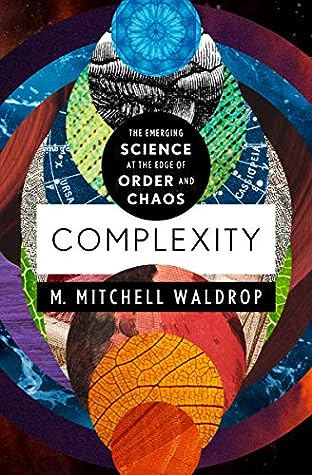More on this book
Community
Kindle Notes & Highlights
Started reading
April 10, 2024
operating at the top was just as easy as operating at the bottom,”
If he ever wanted to understand this messy world that fascinated him so much, if he ever wanted to make a real difference in people’s lives, then he was going to have to learn economics.
Basically, Prigogine was addressing the question, Why is there order and structure in the world? Where does it come from? This turns out to be a much tougher question than it might sound, especially when you consider the world’s general tendency toward decay.
Tiny accidents of history—infinitesimal dust motes and invisible irregularities in the surface of the tray—get magnified by the positive feedback into major differences in the outcome.
“The marginal cost is next to zilch, which means that every copy you produce makes the product cheaper and cheaper.” More than that, every copy offers a chance for learning: getting the yield up on microprocessor chips, and so on. So there’s a tremendous reward for increasing production—in short, the system is governed by increasing returns.
(Producing more grain, for example, may require that farmers start to open up less productive land.) So these tend to be stable, mature industries that are described reasonably well by standard neoclassical economics. “In that sense, increasing returns isn’t displacing the standard theory at all,” says Arthur, “It’s helping complete the standard theory. It just applies in a different domain.”
he suspects that one of the main reasons the United States has had such a big problem with “competitiveness” is that government policy-makers and business executives alike were very slow to recognize the winner-take-all nature of high-tech markets.
“Scientists who go to Washington as scientists generally leave screaming,” he says. “It’s totally alien to them. They want policy to be made on the basis of logic and scientific facts, and that’s probably just a will-o’-the-wisp.” But for whatever reason, the researchers went happily back to their labs, leaving war to the generals and politics to the politicians. And in so doing, says Cowan, they blew a chance for access and influence that they may never have again.
a flap of that butterfly’s wings a millimeter to the left might have deflected the hurricane in a totally different direction. In example after example, the message was the same: everything is connected, and often with incredible sensitivity. Tiny perturbations won’t always remain tiny. Under the right circumstances, the slightest uncertainty can grow until the system’s future becomes utterly unpredictable—or, in a word, chaotic.
“We didn’t want the reclusive types, the ones who shut themselves off to write their book in some office,” says Cowan. “We needed communication, we needed excitement, we needed mutual intellectual stimulation.”
These agents might be molecules or neurons or species or consumers or even corporations. But whatever their nature, the agents were constantly organizing and reorganizing themselves into larger structures through the clash of mutual accommodation and mutual rivalry. Thus, molecules would form cells, neurons would form brains, species would form ecosystems, consumers and corporations would form economies, and so on.
a theory that was better attuned to social and political realities might have predicted the appointment of someone like Volker—who, after all, was just doing the politically necessary job of inflation control superbly well.


